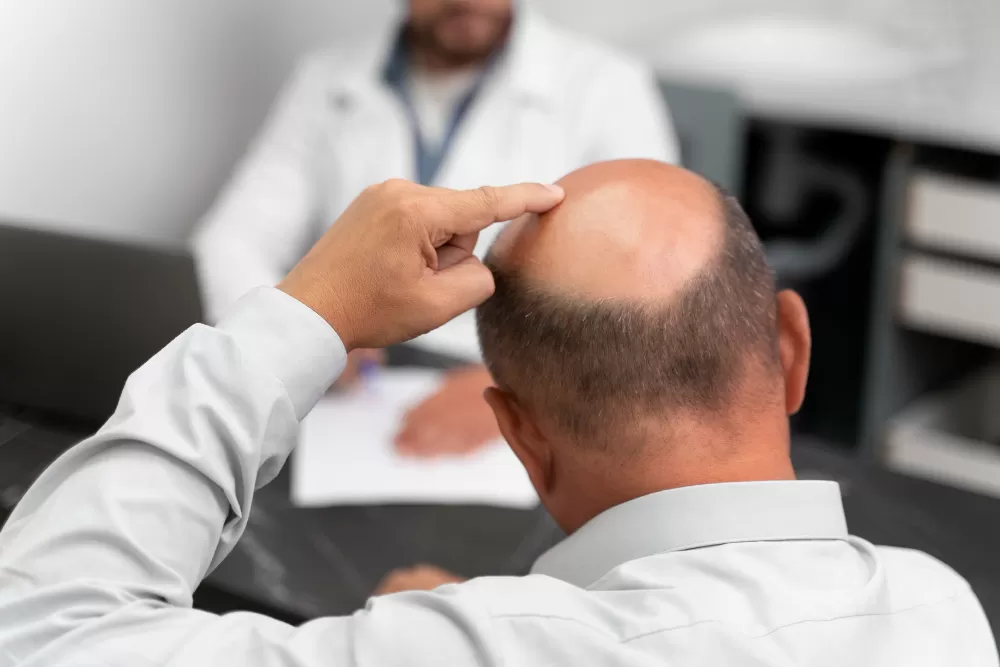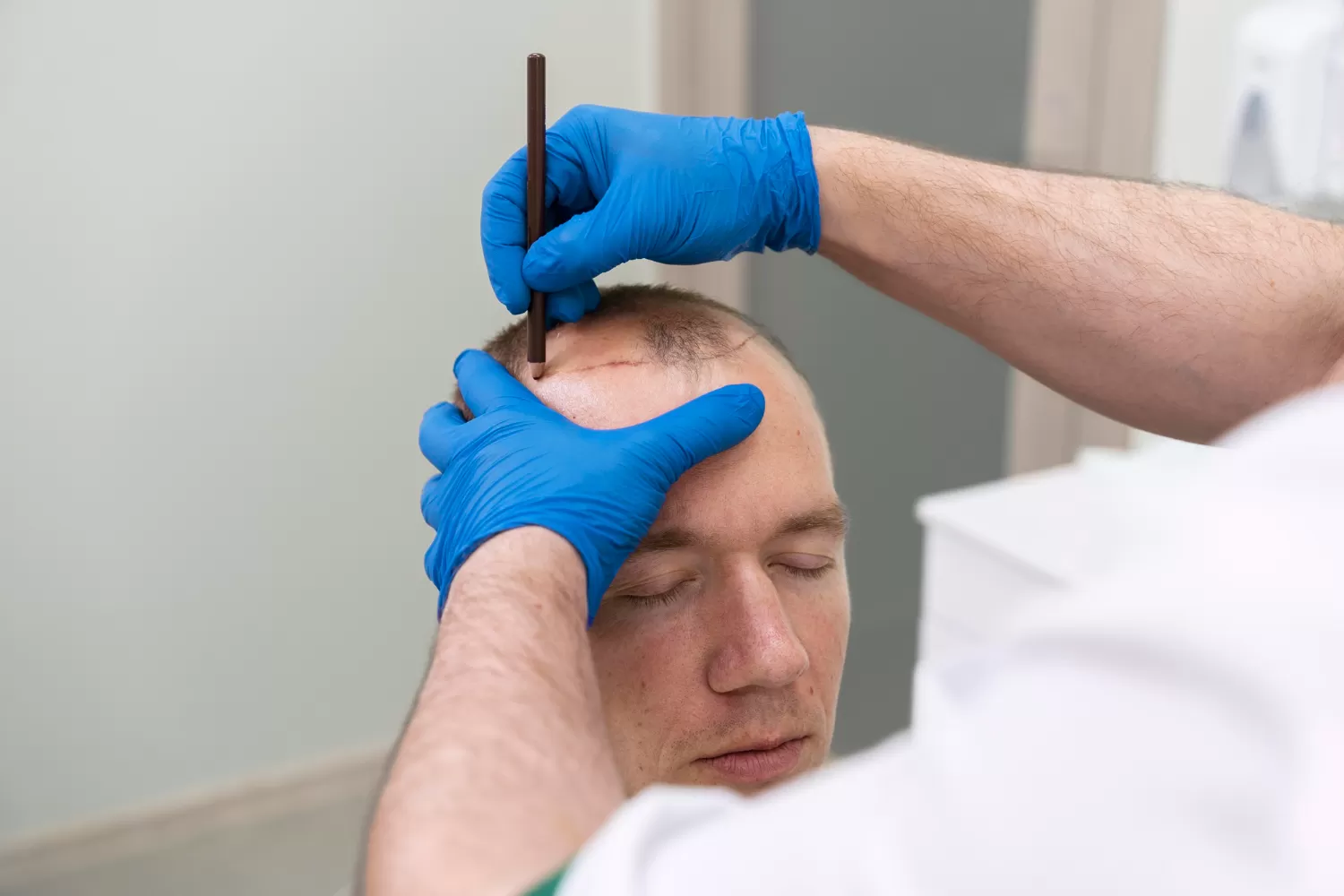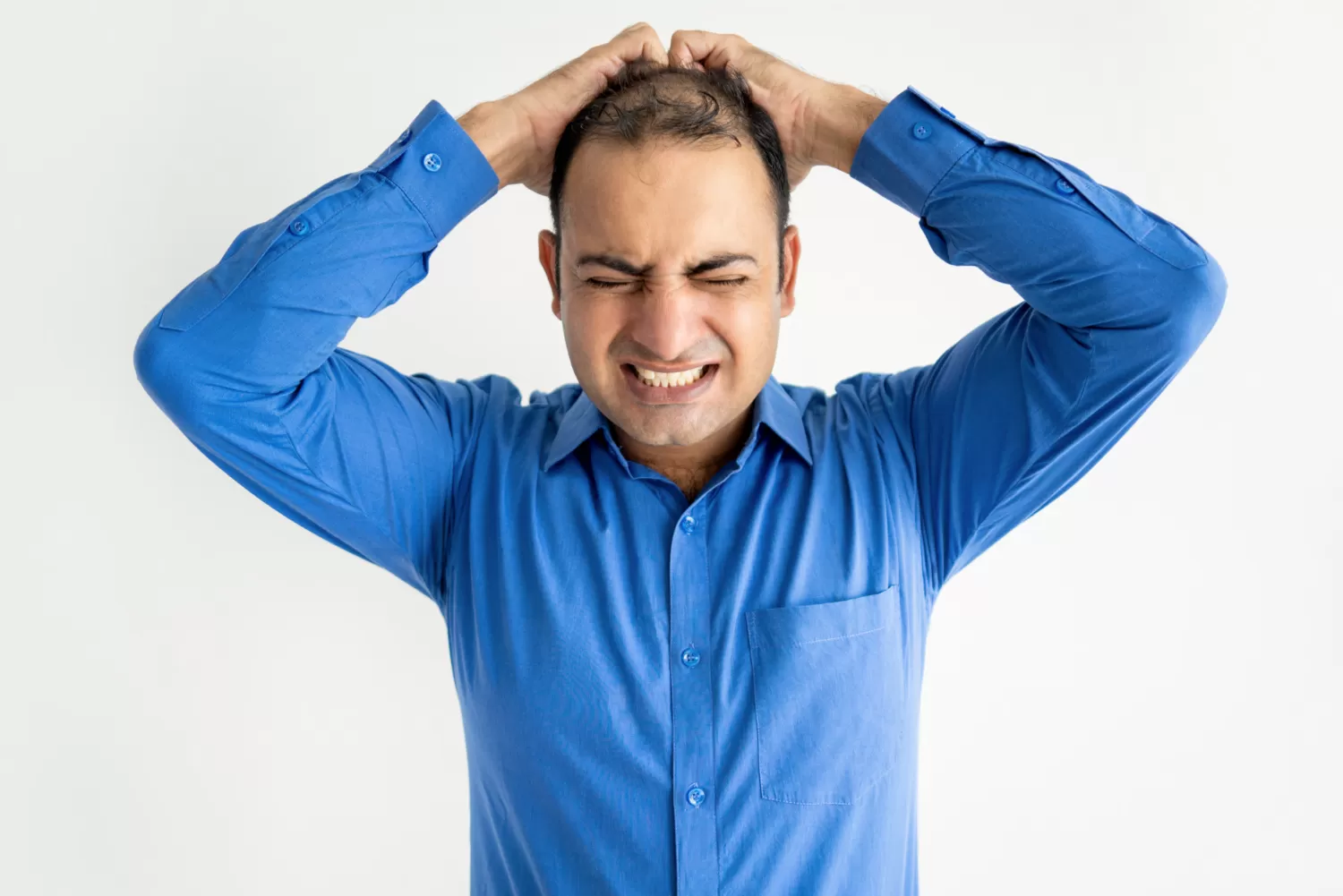Hair loss is a common issue many people face at some point in their lives. However, shock hair loss, also known as telogen effluvium, is a specific type characterized by sudden and intense hair shedding. This content will explore what shock hair loss is, its causes, when it begins, and when it typically resolves, with detailed subheadings.
What is Shock Hair Loss?
Shock hair loss occurs when a significant number of hair follicles prematurely shift from the anagen (growth) phase to the telogen (resting) phase due to a disruption in the normal hair growth cycle. Typically, about 85-90% of hairs are in the growth phase, while 10-15% are in the resting phase. In shock hair loss, stressors or triggers cause many follicles to enter the resting phase simultaneously, leading to noticeable hair shedding within weeks or months.
Unlike androgenetic alopecia (genetic baldness), shock hair loss usually results in diffuse thinning across the scalp rather than localized bald patches.
What Causes Shock Hair Loss?
Shock hair loss can be triggered by physical or emotional stressors. Common causes include:
1. Physical Stress
- Surgeries or serious illnesses: Major surgeries, high fevers, or infections can disrupt the hair cycle.
- Childbirth: Postpartum hormonal changes, particularly a drop in estrogen levels, can lead to postpartum telogen effluvium.
- Rapid weight loss or restrictive diets: Inadequate nutrition or calorie restriction may weaken hair follicles.
- Chronic conditions: Thyroid disorders, iron deficiency anemia, or autoimmune diseases can trigger shedding.
2. Emotional Stress
Intense emotional trauma, grief, or stressful life events may accelerate hair loss, though its impact is often less pronounced than physical stress.
3. Medications and Treatments
Certain medications (e.g., antidepressants, beta-blockers, or chemotherapy drugs) can cause hair shedding.
Chemotherapy, in particular, directly affects hair follicles, leading to rapid hair loss.
4. Hormonal Changes
Menopause, polycystic ovary syndrome (PCOS), or thyroid hormone imbalances can disrupt the hair cycle.
5. Nutritional Deficiencies
Deficiencies in iron, zinc, vitamin D, biotin, or protein can negatively impact hair health and trigger shedding.
When Does Shock Hair Loss Start?
Shock hair loss typically begins 2-3 months after a triggering event due to the time it takes for hair follicles to transition to the resting phase. For example:
- Postpartum shock hair loss is often noticed 2-4 months after childbirth.
- Hair shedding following surgery or a serious illness may appear a few months into recovery.
- Shedding after intense dieting or stress may start weeks or months after the event.
The onset is often sudden, with individuals noticing excessive hair fall during washing, brushing, or on pillows.
How Long Does Shock Hair Loss Last, and When Does It End?
The duration of shock hair loss depends on the trigger and the individual’s overall health. Generally:
- Acute shock hair loss: When the trigger is resolved (e.g., stress subsides, nutrition improves), shedding typically slows within 3-6 months, and hair regrowth begins.
- Chronic shock hair loss: If the underlying cause (e.g., thyroid issues or nutrient deficiencies) is untreated, shedding may persist for months or years.
Full recovery, with hair returning to its previous density, may take 6-12 months after shedding stops. Since hair follicles are usually not permanently damaged, complete regrowth is possible with proper care and treatment.
What Are the Symptoms of Shock Hair Loss?
Recognizing the symptoms can help distinguish shock hair loss from other types of hair loss:
- Diffuse thinning: Hair loss occurs evenly across the scalp.
- Sudden shedding: Excessive hair fall (more than 100-150 strands per day) is noticeable.
- Scalp sensitivity: Some individuals may experience mild tingling or tenderness on the scalp.
- No bald patches: Unlike other conditions, shock hair loss does not cause complete baldness in specific areas.
How Can Shock Hair Loss Be Prevented and Managed?
While it may not always be possible to prevent shock hair loss, certain steps can reduce the risk and support recovery:
1. Balanced Nutrition
A diet rich in protein, iron, zinc, vitamin D, and omega-3 fatty acids supports hair health.
Consult a doctor for vitamin supplements if needed.
2. Stress Management
Techniques like meditation, yoga, or regular exercise can indirectly reduce hair shedding by lowering stress levels.
3. Hair Care
Avoid tight hairstyles or excessive heat styling that can damage hair.
Use gentle shampoos and products that do not irritate the scalp.
4. Addressing Underlying Causes
Seek medical advice for hormonal or nutritional issues.
Blood tests can check for thyroid function, iron levels, or vitamin deficiencies.
When Should You See a Doctor?
While shock hair loss often resolves on its own, consult a dermatologist or doctor if:
- Shedding persists beyond 6 months.
- The scalp shows redness, flaking, or itching.
- Hair loss is localized or patchy.
- Shedding is accompanied by fatigue, weight changes, or skin issues.
Conclusion
Shock hair loss is typically a temporary condition, and hair often regains its health once the triggering factor is addressed. However, prolonged shedding or signs of an underlying health issue warrant professional evaluation. A balanced diet, stress management, and proper hair care can support recovery and promote healthy regrowth.





No comments yet. Be the first to comment!